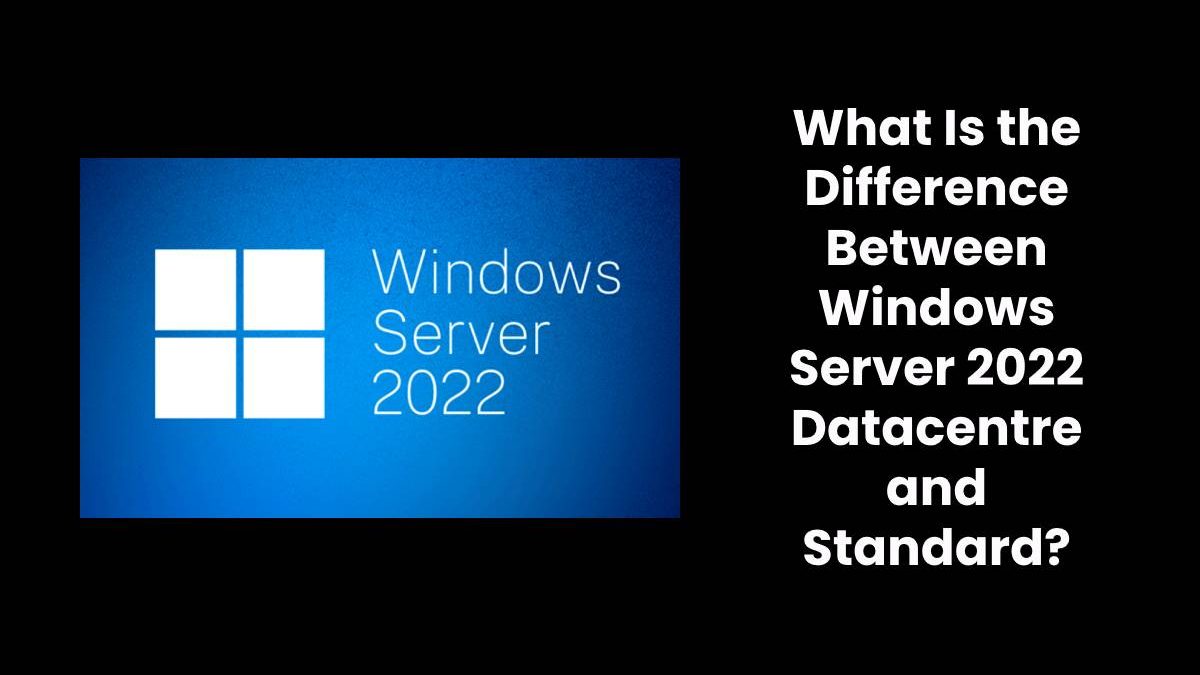Windows Server 2022 will be accessible in two primary releases: Standard and Datacentre. Also, Microsoft will present another release for Azure. Windows Server Essentials will presently not be a different SKU, and there is another OS for hyper-converged frameworks.
Table of Contents
Version:
In each version, the name of Windows Server 2022 will change because the postfix “LTSC” has been dropped by Microsoft. This abbreviation represents the Long-Term Service Channel and assists with separating this adaptation of the working framework from the Semi-Annual Channel (SAC). This is presently excessive since the finish of the server in the semi-yearly channel has as of late been reported.
Microsoft offers Windows Server in the Standard and Datacentre versions. The two versions have indistinguishable highlights; however, they contrast in the number of virtual occasions of the server programming you are permitted to run.
- The Standard version is intended for little to medium-sized associations that need something like two examples of server programming in a virtual working framework.
- The Datacentre version is streamlined for enormous scope virtualization; its permit permits one server to run a limitless number of Windows Server cases.
Three Releases for Server 2022:
Since rendition 2012, Microsoft has offered the Server OS in two primary releases, which vary fundamentally as far as virtualization privileges. Since Server 2016, nonetheless, the Datacentre Edition has gotten elite highlights that are absent in the standard release. These incorporate Shielded VMs, Storage Replica, and programming characterized capacity with Storage Spaces Direct.
This distinction stays in the 2022 variant, where the Standard Edition is restricted to two virtual examples and just incorporates a stripped-down rendition of Storage Replica (restricted to one organization with a limit of 2 TB volumes).
The two releases are presently joined by a third, called Windows Server 2022 Datacentre: Azure Edition. As the name proposes, this is expected uniquely for running in the Microsoft cloud.
It has two elite highlights in its introduction, which are not accessible on-prem, essentially not for now. These are hatching, which considers introducing refreshes without rebooting the PC, and SMB over QUIC as an option in contrast to VPNs.
Server Operating System Licenses
The Standard and Datacentre releases of Windows Server both use processor-based permitting, with each permit permitting up to two actual processors. A permit can be applied to just a solitary server.
1. Standard Edition
For every Standard Edition programming permit, you allot, you might run one occurrence of the server programming at any one time in the actual working framework climate (OSE). You may likewise run two occasions in virtual OSEs on the authorized server.
Notwithstanding, assuming that you run two occasions in virtual OSEs, the case in the actual OSE might be utilized distinctly to run equipment virtualization programming and to oversee and support OSEs on the authorized server.
2. Datacentre Edition:
Datacentre Edition licenses incorporate limitless virtualization freedoms. You have the utilization freedoms to run a limitless number of virtualized examples of Windows Server on the authorized server.
Client Access Licenses (CALs) and External Connector Licenses (ECLs):
A Windows Server client or gadget CAL is expected for every client or gadget getting to or utilizing the server programming. The special case is mysterious Internet clients, for example, unidentified clients perusing the association’s public site.
Then again, an association can involve a Windows Server ECL for countless confirmed outer Internet clients. An outer client is an individual who isn’t a representative or somebody to whom you offer facilitated types of assistance utilizing the server programming.
Far off Desktop Services:
Assuming the server is running Remote Desktop Services, separate Remote Desktop Services CALs or ECLs are expected to get to the administrations. Distant Desktop Services permits the far-off execution of utilizations from a wide scope of gadgets over practically any kind of organization association. It was known as Terminal Services before the arrival of Windows Server 2008 R2.
Privileges Management Services
Assuming that the server is running Rights Management Services (RMS), separate RMS CALs or ECLs are expected to get to the administrations. RMS is a data assurance innovation that works with RMS-empowered applications to assist with shielding computerized data from unapproved use. RMS usefulness is remembered for the Windows Server permit.

